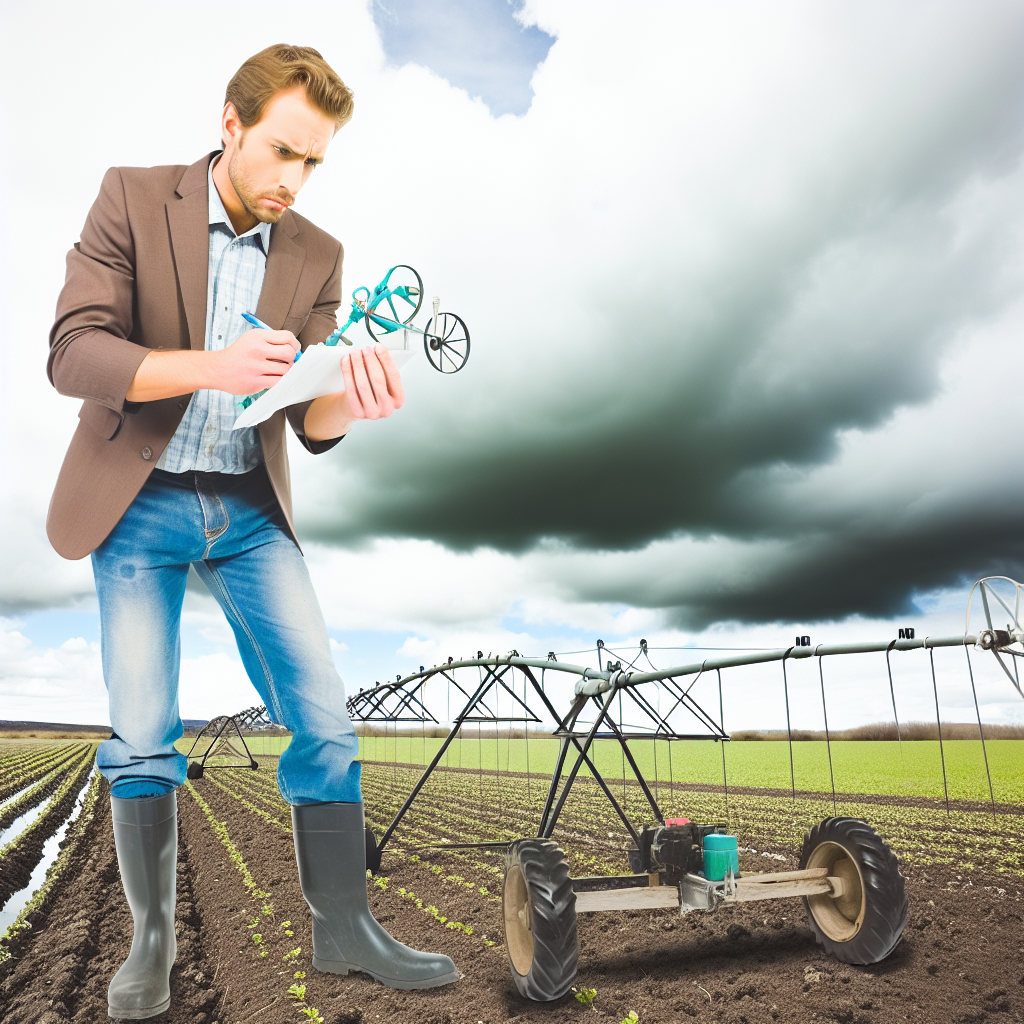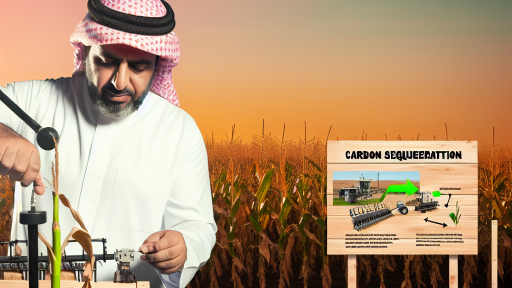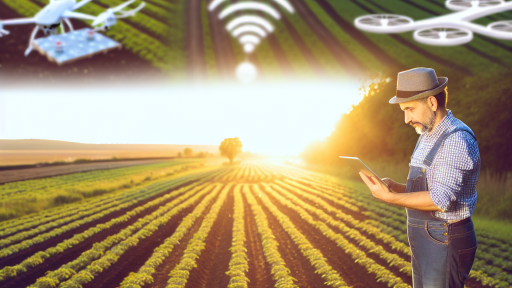Understanding the Impact of Climate Change on Water Availability
Climate Change and Water Resources
Climate change significantly alters water availability across regions.
It increases the frequency of droughts and floods.
Additionally, higher temperatures heighten evaporation rates.
Consequently, agricultural systems face greater water stress.
Regional Variations in Water Availability
Changing precipitation patterns affect different regions uniquely.
Some areas experience more intense rainfall events.
On the other hand, arid regions suffer from reduced rainfall.
Farmers must adapt to these geographical discrepancies.
Impact on Crop Production
Water scarcity directly impacts crop yields.
Crops require consistent moisture for growth.
If water is insufficient, plants will not survive.
Farmers must select drought-resistant crop varieties.
Implications for Livestock
Livestock also require access to adequate water supplies.
Decreased water availability reduces their health and productivity.
It is essential to ensure proper hydration for livestock management.
Transform Your Agribusiness
Unlock your farm's potential with expert advice tailored to your needs. Get actionable steps that drive real results.
Get StartedAdaptive Strategies in Water Management
Farmers must implement efficient irrigation techniques.
Drip irrigation systems can conserve water significantly.
Moreover, rainwater harvesting offers another adaptive solution.
These strategies help mitigate the impacts of changing water patterns.
Analyzing Historical Water Patterns and Trends in Agriculture
The Importance of Historical Data
Understanding historical water patterns is crucial for effective agriculture.
This data provides insights into how weather impacts crop yields.
Farmers can use this knowledge to make informed decisions.
Historical Water Patterns Across Regions
Different regions experience unique water patterns over time.
For instance, the Midwest United States has distinct seasonal rainfall.
Conversely, areas in California face prolonged droughts.
These variations affect farming strategies significantly.
Trends in Water Availability
Water availability has fluctuated dramatically in recent decades.
Climate change plays a crucial role in these fluctuations.
Farmers now face unprecedented challenges in securing water.
Adjustments to irrigation practices become vital under these conditions.
Impact of Irrigation Technology
Advancements in irrigation technology shape farming practices significantly.
Technologies like drip irrigation minimize water waste effectively.
This innovation leads to improved crop yields in water-scarce areas.
Understanding Seasonal Variations
Seasonal variations have historically dictated planting and harvesting times.
Farmers must adapt their schedules based on these patterns.
Hurricanes and droughts can shift these timings unpredictably.
Adapting to Future Changes
It is essential for farmers to anticipate future water trends.
Proactive strategies can mitigate risks associated with water scarcity.
Investing in research and development for sustainable practices proves beneficial.
Showcase Your Farming Business
Publish your professional farming services profile on our blog for a one-time fee of $200 and reach a dedicated audience of farmers and agribusiness owners.
Publish Your ProfileTechniques for Rainwater Harvesting and Storage Solutions
Understanding Rainwater Harvesting
Rainwater harvesting involves collecting and storing rainwater for future use.
This practice reduces dependence on conventional water sources.
Farmers can implement various systems based on local conditions and needs.
Methods for Collecting Rainwater
Effective rainwater collection begins with proper setup.
In-ground cisterns serve as reliable storage systems.
Rooftops can funnel water into gutters and storage tanks.
Using permeable surfaces allows for ground infiltration.
Harvesting from roadways can also be an effective method.
Key Storage Solutions
Choosing the right storage solution is crucial for sustainability.
Above-ground tanks are widely used due to their accessibility.
Underground tanks offer benefits like insulation and space-saving.
Choose materials that are safe for water storage.
Designing an Effective System
Design your system to optimize water capture and storage.
Calculate the potential water yield based on local rainfall patterns.
Include filters to remove debris before water enters storage.
Ensure that your system can accommodate seasonal variations.
Maintenance of Rainwater Systems
Regular maintenance is necessary to ensure system efficiency.
Inspect gutters and downspouts for blockages and damage.
Clean storage tanks to prevent stagnation and contamination.
Monitor water quality regularly to ensure its safety.
Community Engagement and Support
Community involvement enhances rainwater harvesting efforts.
Sharing knowledge and resources can lead to successful implementation.
Local workshops can teach practical skills and techniques.
Collaboration with agricultural organizations can provide funding and support.
Find Out More: Top Farming Methods to Handle Climate Shifts
Implementing Drip Irrigation Systems for Efficient Water Use
Overview of Drip Irrigation
Drip irrigation delivers water directly to the plant’s roots.
This method minimizes water loss through evaporation.
Additionally, it reduces weed growth by targeting specific areas.
Benefits of Drip Irrigation
Drip irrigation conserves a significant amount of water.
It can reduce water usage by up to 50% compared to traditional systems.
Moreover, this system increases crop yield and quality.
It enables farmers to manage soil moisture effectively.
Furthermore, it mitigates the risk of overwatering.
Components of a Drip Irrigation System
The main components include a water source, filtration system, and tubing.
Emitters deliver water at a controlled rate.
Drippers are essential for ensuring even distribution.
Pipes connect all the parts securely.
Installation Process
Begin by assessing your field layout and water requirements.
Next, choose suitable tubing and emitters based on your crops.
Then, install the filtration system to eliminate contaminants.
Showcase Your Farming Business
Publish your professional farming services profile on our blog for a one-time fee of $200 and reach a dedicated audience of farmers and agribusiness owners.
Publish Your ProfileFinally, set up the drip lines and test the system for efficiency.
Maintenance of Drip Irrigation Systems
Regular maintenance ensures optimal performance.
Inspect the system for any leaks or blockages.
Additionally, flush the lines to prevent sediment accumulation.
Replace damaged emitters promptly to maintain effectiveness.
Adopting Drip Irrigation in Diverse Climates
This system is adaptable to various climatic conditions.
In arid regions, drip irrigation conserves scarce water resources.
Conversely, it can help manage moisture levels in humid areas.
Farmers can customize the setup according to specific needs.
Learn More: Rainwater Harvesting Strategies for Modern Farms
Crop Selection and Rotation Strategies for Water-Sensitive Regions
Understanding Water-Sensitive Areas
Water-sensitive regions experience irregular rainfall patterns.
Farmers must adapt their practices in these areas.
Understanding local soil types helps inform crop choices.
Additionally, knowing the water retention capacity of the soil is crucial.
Choosing the Right Crops
Selecting drought-tolerant crops can mitigate water challenges.
For instance, sorghum and millet require less water to thrive.
Moreover, incorporating native plant species enhances soil health.
Farmers should consider crop varieties that mature quickly.
Implementing Crop Rotation
Crop rotation promotes soil fertility and structure.
This practice reduces pest and disease pressures in the field.
Additionally, rotating deep-rooted and shallow-rooted crops improves moisture uptake.
Farmers can benefit from alternating between legumes and grains.
Utilizing Cover Crops
Cover crops enhance soil moisture retention during dry spells.
They also prevent soil erosion and nutrient runoff.
Furthermore, these crops can improve soil organic matter over time.
Popular options include clover and vetch, which fix nitrogen in the soil.
Integrating Irrigation Technologies
Implementing efficient irrigation systems optimizes water use.
Drip irrigation delivers water directly to plant roots.
This method significantly reduces water loss compared to traditional methods.
Farmers should consider rainwater harvesting to supplement irrigation needs.
Monitoring and Adapting Practices
Regular monitoring of soil moisture levels is essential.
This practice allows farmers to make informed decisions about irrigation.
Furthermore, adapting planting schedules can respond to changing climate conditions.
Farmers should stay informed about weather forecasts and trends.
Explore Further: Farmers’ Climate Change Adaptation Cheat Sheet

Utilizing Soil Moisture Sensors for Precision Agriculture
Introduction to Soil Moisture Sensors
Ssoil moisture sensors are vital tools in modern agriculture.
They enhance precision irrigation practices significantly.
These devices measure the water content in the soil accurately.
As a result, farmers can make informed decisions about irrigation.
Benefits of Soil Moisture Sensors
One major benefit is improved water efficiency.
Showcase Your Farming Business
Publish your professional farming services profile on our blog for a one-time fee of $200 and reach a dedicated audience of farmers and agribusiness owners.
Publish Your ProfileFarmers can avoid over-watering their crops.
This leads to reduced water costs and better sustainability.
Moreover, proper watering can enhance crop yields.
Types of Soil Moisture Sensors
There are several types of soil moisture sensors available.
Tensiometers are one popular option for measuring soil tension.
Capacitive sensors are another effective choice.
Each type has its advantages and specific use cases.
Integrating Sensors into Farming Practices
Integrating soil moisture sensors into farming is crucial.
Farmers need to select sensors based on their specific needs.
Installation often requires minimal effort but offers significant returns.
To maximize benefits, regular maintenance is necessary.
Data Interpretation and Action
Understanding sensor data is essential for effective use.
Farmers should be familiar with the optimal soil moisture levels.
Quick reactions to data readings can prevent crop stress.
For example, adjusting irrigation scheduling based on moisture levels is key.
Success Stories from Farmers
Many farmers have reported success after using sensors.
For instance, Emily Rivera saw a 30% reduction in water usage.
She achieved this while maintaining high-quality crop production.
Additionally, this approach allowed her to conserve water resources long term.
Future Trends in Soil Moisture Sensing
The technology for soil moisture sensors continues to evolve.
Advancements will likely focus on increased accuracy and connectivity.
Farmers can expect more integration with smart farming technologies.
This will create more responsive and efficient farming practices.
Uncover the Details: Integrated Water Management Practices for Farmers
Adopting Conservation Tillage to Enhance Water Retention
Understanding Conservation Tillage
Conservation tillage is an innovative farming method.
This approach reduces soil disturbance during planting.
Additionally, it leaves crop residues on the soil surface.
This practice significantly benefits moisture retention.
Benefits of Conservation Tillage
First, it improves soil structure and health.
Moreover, it enhances the soil’s capacity to retain water.
Farmers often see reduced erosion rates.
Consequently, they can achieve better crop yields.
Implementing Conservation Tillage
To start, farmers need to evaluate their current practices.
They can identify specific areas needing improvement.
Next, education on conservation tillage techniques is crucial.
Workshops and resources can provide valuable insights.
Choosing the Right Equipment
Selecting appropriate equipment is essential for success.
Specialized machinery allows for precise tillage techniques.
Implementing no-till planters is a proven strategy.
These tools help preserve soil health and moisture levels.
Showcase Your Farming Business
Publish your professional farming services profile on our blog for a one-time fee of $200 and reach a dedicated audience of farmers and agribusiness owners.
Publish Your ProfileMonitoring and Adapting Practices
Ongoing monitoring is vital for conservation tillage success.
Farmers should track soil moisture and crop performance.
Adjustments may be necessary based on weather patterns.
Flexibility ensures continuous improvement in sustainability.
Policy Advocacy for Sustainable Water Management in Agriculture
Importance of Effective Water Management
Water management is critical for sustainable agriculture.
It influences crop yields and soil health directly.
Additionally, effective water use conserves natural resources.
Farmers must adapt to changing water availability.
This adaptation ensures food security for future populations.
Engaging Stakeholders
Policy advocacy requires active engagement with stakeholders.
Farmers, government agencies, and NGOs play vital roles.
Collaboration fosters innovative solutions to water challenges.
Regular forums can facilitate open communication.
Effective engagement strengthens policy-making processes.
Developing Comprehensive Policies
Robust policies address both current and anticipated water issues.
These policies should promote efficient irrigation techniques.
Moreover, they must support rainwater harvesting initiatives.
Incentives for adopting sustainable practices can drive change.
Funding for research on drought-resistant crops is essential.
Promoting Education and Awareness
Education is essential for sustainable water management.
Farmers should receive training on water conservation strategies.
Workshops and seminars can enhance their knowledge base.
Public awareness campaigns can drive community involvement.
A well-informed public supports better water policies.
Measuring and Monitoring Success
Effective policies require regular evaluation and adjustment.
Monitoring water usage helps identify areas for improvement.
Data-driven approaches facilitate informed policy decisions.
Stakeholders should collaborate on setting measurable goals.
Transparency in reporting outcomes fosters trust and accountability.




